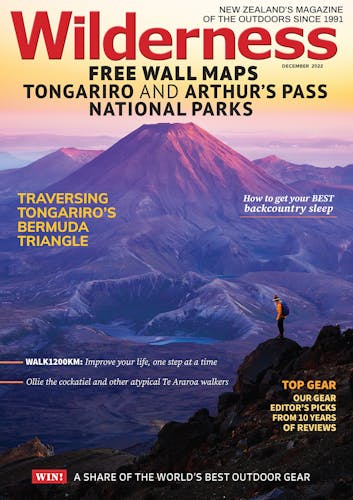Award-winning journalist and author Paul Hersey has spent over 30 years climbing extensively in New Zealand and overseas. His latest book, The Cold Inside, takes readers on a journey to understand the inspiration as well as the cost of climbing mountains.
The Cold Inside seems to be centred around your relationship with mountains and what they mean to you. Was that your goal?
This book came from working through the grief of losing Jamie and Marty [two climbing partners], and struggling with my own motivations around climbing. I was trying to look for a narrative structure to allow me to tell the story.
The book takes the reader on an emotional journey. What was writing it like?
Tearful. It was certainly tough writing parts of it. I didn’t really know where it was going to go when I was writing it, or what the outcome was going to be. I was dealing with not climbing, and loss, trying to find some sense of closure, and I was really cautious about the latter part of the book, because there’s a lot of people it affects. It took a while to work through things, but it’s been really peaceful for me to be able to come to terms with my own decision making.
Your book highlights the fragility of life. How has mountaineering changed your approach to life?
It makes me appreciate life. I’ve been mountaineering for 35 years, and I’m a lot less gung-ho than I was, even if I don’t come across as that. I’m more resilient. Being in the mountains focuses everything, and when I come back from a trip I can deal with issues and stress more easily. In the book I write about the Christchurch earthquakes and how the survival instinct kicked in pretty quickly; it was like being in a rockfall in the mountains in the middle of the city.
You talk a lot about the risk and loss that come with climbing mountains, and who you climb with being more important than what you climb. How has this affected you over the years?
Climbing with others is based around good solid decision making, but also understanding how hard you push it, and respecting your climbing partner if they don’t want to push it. Understanding that ultimately it doesn’t really matter, it’s just a stupid mountain. When you lose those people, it screws everything. You’ve not just lost someone close to you, you’ve lost them doing something you both know is risky, and that doesn’t get any easier in 30-odd years of climbing. If anything, it gets harder because you’re not so naive, and you know you’re making good decisions.
You write about the book being a way to understand why you climb. Do you feel you fully understand that now?
Not always. I’m probably more at ease with it, coming back to it again. I’m getting a bit older and slower too, so the motivation’s a little less to get up at 4am in the morning. The ego’s gone out of it, and I have nothing to prove anymore, even to myself. I just enjoy climbing with good friends and with my wife Shelley, who’s a very strong climber and much more motivated than me.
You talk about lots of different mountains in the book. Do you have a favourite?
I have favourite areas more than mountains, and the Hopkins is close to my heart. In the early 2000s a good mate and I spent every other weekend there for around six or seven years. We just lived for the mountains. We’d come back to work, be knackered, and not care about anything until we went the next time. Our kit didn’t even get packed away. The Hopkins feel quite close, I can read them, and they’re familiar to me. I don’t live in the mountains: I like to get amongst them, but I like to come out of them too. It’s a good place to go and express myself, find challenges, and then come back and think, ‘Oh yeah, that’s pretty cool.’








